by ejceasar
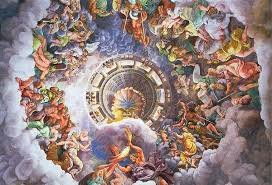
Myth and Mythologies. Myths can be classified as origin myths, cultural myths and political myths and mythology is a collection of myths belong to a time period, region or religion
A flood myth also known as deluge myth is a narrative in which great flood, usually sent by a deity or deities to destroy civilizations as an act of divine retribution. Flood myths are common across a wide range of cultures, extending back to Bronze Age and Neolithic prehistory.
Every mythology has its own version of creation myths, or other wise commonly known as how the world came in to existence. In Egyptian Mythology, the creation myth starts with an egg in the ocean. There was a single egg floating in the ocean and the egg hatched and the son of Ra was born. According to the Indian Mythology, the universe was created by Lord Brahma out of himself.
The idea of an unimaginable war that threatens to tear apart the cosmos connects with us so deeply that it still powers our epic stories. The Lord of the Rings, Avengers, Hobbits, and countless others all feature this age-old trope. It can be found in the legends of almost every ancient culture.
We all know the myth of Atlantis: a utopian city wiped out in a single night thanks to an unearthly cataclysm. But Atlantis is only the most famous of mythical lost cities. Near-identical stories crop up with such regularity that it’s tempting to think they must be somehow related.Take Iram (also known as Ubar). A fabled city in the deserts of modern Saudi Arabia, Iram is said to have been wiped out in a single night when Allah buried it under a flood of sand. In other words, it’s the Atlantis myth translated to a world without water. Then you have Ys off the coast of France, which was supposedly flooded around the 5th century by a mythical warrior king. And that’s before we get onto the story of Sodom and Gomorrah and the Hindu myth of Tripura, which both involve gods wiping out immoral cities in a rain of fire.In short, the idea of a city obliterated overnight is so powerful it seems to show up everywhere. Are these half-remembered tragedies with some basis in fact (like Pompeii) or just stories that play to the apocalyptic fantasist in all of us? We’ll leave it to you to decide.
Jesus’s resurrection is the big selling point of Christianity, a unique moment that established Christ as the one true savior. At least that’s the idea. In reality, the idea of a dying deity or important human who is later resurrected has been around for millennia.Most famously, this includes the story of Osiris, the ancient Egyptian god whose birth was heralded by a star, who was betrayed by a friend, was murdered, and was later resurrected. But there are less explicit versions too. The Greek cult of Dionysus had their figurehead killed off every two years, only to rise again at a later date. Persephone also died regularly, and many pagan traditions from Scandinavia to Central America involved gods dying and returning to life or men dying and coming back as deities.Perhaps most interestingly of all, a historical tablet known as “Gabriel’s Revelation” allegedly tells the story of a Jewish rebel known as Simon who was killed by the Romans, only to be resurrected three days later. The catch? It was written in 4 BC, over 30 years before Jesus allegedly pulled off the same trick. Either it’s a mistranslation, or the Son of God was building on centuries of groundwork by other deities.
Dragons are likely the most traveled creature in all of mythology. Even more than vampires, they have a habit of turning up in societies and cultures so far apart in time and space you’d think it was impossible. There are ancient Sumerian tablets that record the act of dragon-slaying, Greek tales of dragons cavorting with other monsters, and an entire science built around the uses of their bones in China. In Central America, the Mayans worshipped the feathered snake Quetzalcóatl, while both Norse and Christian mythologies specifically mention dragons.As late as 1886, Victorian scientists still held that dragons had once existed but had gone extinct. Not until dinosaurs became firmly established in the public mind did people see the probable link between ancient fossils and dragon myths. Currently, our best guess is that various cultures all stumbled over dino bones at some point and translated them into gigantic mythological beasts.
Thanks to the occasional self-indulgent movie adaptation, most of us probably have a vague knowledge of the poems of Homer. Considered the earliest examples of Western literature, his Iliad and Odyssey are epic myths of tortured heroes fighting their way across oceans and continents in search of metaphorical salvation—and they appear in near-identical form in almost every culture.It’s called the “hero’s journey,” and just about all epic stories throughout history have followed the specific model. Famously, George Lucas deliberately based the first Star Wars on it, and you can find its influence in The Lord of the Rings, the Oz books, and even Harry Potter. But this archetypal myth was around even before fancy-pants anthropologists handed it over to lazy scriptwriters.The Sumerian Epic of Gilgamesh, the story of Sinbad the Sailor in the 1,001 Nights, the legend of King Arthur, the tale of the Argonauts . . . all of these and plenty more fit the structure of the hero’s journey just like Homer’s awesome poems above. In fact, nearly every single culture in recorded history has myths that fall into this category. Even Moses’s epic wanderings in the Bible fit this model. We as a species truly are lazy storytellers.
Cultural myths don’t just entertain us and record historical events. They also serve to explain why the world is the way it is. Hence the prevalence of stories designed to give a reason for some mystery of existence.In the Bible, we have the Tower of Babel, which explains why we have different languages. God’s speech prior to expelling Adam and Eve from Eden is another example, giving a reason for both the agony of childbirth and why ancient man had to toil all day in the fields. Wander across traditions into the stories of the Ancient Greeks and the legend of Prometheus demonstrates why fire is so valuable, while the story of Pandora gives a reason for the existence of disease and suffering.Start looking for them and you’ll find these explanatory myths scattered across every culture in history. There are myths that explain why rhinoceroses have no hairs, why incest is forbidden, and how medicine came into existence. Anything you can think of has some poetic explanation somewhere. In an unscientific age, poetry was often all we had.
Everything that begins has an end, and our ancient ancestors knew that as simply as we do. No surprise then that most cultures carry an End of Times myth to counter their creation story—a sort of consolation prize for those who won’t live to see the actual end (i.e. everyone).For Christians, this apocalypse is a gigantic epic that plays out over many, many years and involves so many disasters, wars, and calamities that it’s hard to keep track. Same with the Norse Ragnarok, which is a collection of disasters and battles that results in the Earth being drowned and recreated afresh. In Hinduism, it’s another epic battle followed by a rebooted universe, while Buddhism annihilates the world in a pyrotechnic fireworks display so amazing it deserves its own Michael Bay film.In other words, most humans throughout history have lived with their own personal vision of the end of everything, one that makes sense in the context of their lives and cultures. And that’s all these myths really are: ways for us humans to make sense of the world we live in, no matter when or where we are. It’s just an added bonus that some of them make absolutely awesome stories, too.
Learn a few fun facts

The red clothes worn by Hindu brides are associated with "scarlet women" in Christianity
The white clothes that represent virginity and purity in the Christian mythosphere are associated with spirituality and otherworldliness in the Hindu mythosphere; are restricted to monks, priests, and widows; and do not form part of household rituals.
The goat, the symbol of virility that is sacrificed to the Hindu Goddess, is the symbol of the devil in the biblical worldview.
The yoginis of Hinduism, who are handmaidens of the Goddess and are wild erotic creatures, recall the witches coven of the Christian mythosphere.
The pentagram is the symbol of Lakshmi, Hindu goddess of wealth, and Shukra, guru of demons, and is associated with Venus, wealth, fertility, creativity, and erotic power in Hindu astrology, but is considered the mark of the devil in Christianity.
'described in Western literature as the "dark drinker of blood" and is associated with witchcraft.
The serpent, which is associated with earth's fertility and occult wisdom in Hinduism, is considered a manifestation of the devil in biblical traditions.
To the Western eye the swastika is the symbol of Hitler and the Holocaust. To Hindus it is associated with auspiciousness and fertility.
Demon in Judeo-Christian-Islamic Paradigm is Evil being who opposes God but in Hindu Paradigm Demon is a Being who lives under-ground in bejeweled cities, fights gods, and possess the secret of rejuvenation
Gods in Judeo-Christian-Islamic Paradigm False deities worshipped by nonbelievers and pagans whereas in Hindu Paradigm Celestial beings who live above ground or in the skies, fight demons, and have consumed the elixir of immortality
The Bantu believe that fire was brought to earth by a god or goddess, who gave it to humans as a gift.

The Bantu Mythology
The Bantu mythology is the system of myths and legends of the Bantu peoples of Africa. Although Bantu peoples account for several hundred different ethnic groups, there is a high degree of homogeneity in Bantu cultures and mythologies, just as in Bantu languages.
The Bantu people, who live in many parts of Africa, have a rich and diverse mythology that includes many different stories and legends. Here are a few examples of famous myths from Bantu mythology: The Creation Myth
The Bantu believe that the world was created by a god or gods, who formed the earth, sky, and all living things. Different Bantu groups have different creation stories, but they often involve the god or gods creating the world out of chaos or darkness.
The Myth of the First Human
According to Bantu legend, the first human, named Likumbi, was created by the god or gods. Different Bantu groups have different stories about how the first human was created, but they often involve the god or gods fashioning the first human out of clay or dust.
The Myth of the First Fire
The Bantu believe that fire was brought to earth by a god or goddess, who gave it to humans as a gift. Different Bantu groups have different stories about how fire was brought to earth, but they often involve a trickster figure stealing fire from the gods or a god or goddess giving fire to humans as a reward for good behavior.
The Myth of the First Rain
The Bantu believe that the first rain was brought to the world by a god or goddess, who sent it to earth as a gift. Different Bantu groups have different stories about how rain was brought to earth, but they often involve a god or goddess opening up the sky to let the rain fall or sending a messenger to earth to bring the rain.
The Myth of the Afterlife
The Bantu people have different beliefs about the afterlife, but some of the most common are a belief in a heaven and hell, a belief that the dead go to the land of the ancestors or a belief that the soul is reincarnated.
The Akamba people, who live in Kenya, have a rich and diverse mythology
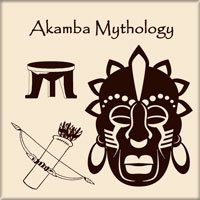
The Kamba or Akamba people are a Bantu ethnic group - or tribe - who live in the semi-arid formerly Eastern Province of Kenya stretching east from Nairobi to Tsavo and north up to Embu, Kenya.
The Akamba people, who live in Kenya, have a rich and diverse mythology that includes many different stories and legends. Here are a few examples of famous myths from Akamba mythology:
The creation myth:
The Akamba believe that the world was created by a god named Mulungu, who formed the earth and sky, the sun and moon, and all living things.
The myth of the first woman:
According to Akamba legend, the first woman, named Wambui, was created from a rib taken from the first man, named Kintu.
The myth of the first fire:
The Akamba believe that fire was brought to earth by a bird named Kibokolo, who stole it from the gods and gave it to humans.
The myth of the first fruit trees:
The Akamba believe that the first fruit trees were created by a goddess named Nzambi, who planted them in the garden of the first man and woman.
The myth of the first death:
The Akamba believe that death was brought to the world by a god named Kibuka, who punished humans for their disobedience.
The myth of the first rain:
The Akamba believe that the first rain was brought to the world by a god named Kibuka, who punished humans for their disobedience.
Please note that this is just a small sample of the Akamba mythology stories, and there are many more myths and legends that are important to the Akamba people.
Apophis was perhaps the only Egyptian god very powerful, was not worshiped but feared.
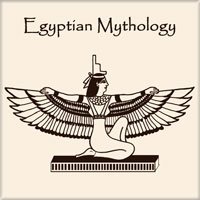
Egyptian mythology is the collection of myths from ancient Egypt, which describe the actions of the Egyptian gods as a means of understanding the world. The beliefs that these myths express are an important part of ancient Egyptian religion. Myths appear frequently in Egyptian writings and art, particularly in short stories and in religious material such as hymns, ritual texts, funerary texts, and temple decoration. These sources rarely contain a complete account of a myth and often describe only brief fragments.
Some of the most famous myths of Egyptian mythology include the story of Ra and the creation of the world, the story of Osiris, Isis, and Horus, and the story of the god Anubis and the weighing of the heart.
The story of Ra and the creation of the world describes how the sun god Ra emerged from the chaos of Nun to create the world and the gods. The story of Osiris, Isis, and Horus tells of the murder of Osiris, the god of the underworld, by his brother Set, and how Osiris's wife Isis and son Horus sought to avenge his death and restore him to power.
The story of Anubis and the weighing of the heart is a myth that describes the judgement of the dead in the afterlife. It tells how the god Anubis would weigh the hearts of the deceased against the feather of Ma'at, the goddess of truth and justice, to determine whether they were worthy of entering the afterlife.
Other notable myths in Egyptian mythology include the story of the god Horus and his battles with his uncle Seth, the myth of the goddess Hathor, and the story of the god Ra and the serpent Apep.
These myths play a central role in Ancient Egyptian religion and were widely known among the ancient Egyptians. They were often depicted in art and were performed in temple rituals. They also played a significant role in shaping the culture, beliefs, and worldview of ancient Egyptians.Some say that Kaaba was built by the angels.
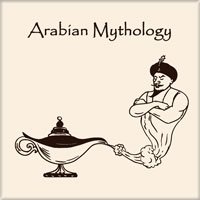
Religion in pre-Islamic Arabia was a mix of polytheism, Christianity, Judaism, and Iranian religions. Arab polytheism, the dominant form of religion in pre-Islamic Arabia, was based on veneration of deities and other rituals.
Famous Myths of Arabian Mythology
-
The myth of djinn
The djinn are supernatural spirits in Arabian mythology that can be good or evil, they are often associated with fire and can take human form.
-
The myth of Al-Khidr
Al-Khidr is a mysterious figure in Islamic mythology, also known as the "Green Man." He is believed to have knowledge of all things and is often associated with water and the afterlife.
-
The myth of Harut and Marut
Harut and Marut were two angels in Islamic mythology who were sent to Earth to test the faith of the people. They were tempted by the devil and ultimately fell from grace.
-
The myth of Iblis
Iblis is the Islamic equivalent of Satan. He was once an angel, but was cast out of heaven for his pride and refusal to bow to Adam.
-
The myth of the seven sleepers
The seven sleepers is a story from Islamic tradition about seven young men who sought refuge in a cave to escape persecution. They fell asleep and awoke years later, to find that the world had changed.
-
The myth of Solomon
Solomon is a prophet in Islamic and Jewish mythology, who is known for his wisdom and power. He is said to have had control over the djinn, birds, and the wind.
The Lugbara people believe in a single creator, called Woot
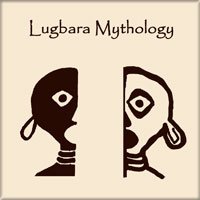
The Lugbara people are an ethnic group living in the Democratic Republic of the Congo, Uganda, and South Sudan. They have a rich mythology that has been passed down through generations, and their stories are a source of pride and identity for the Lugbara people.
The Lugbara people believe in a single creator, called Woot, who is responsible for the creation of the world and all its inhabitants. They also believe in a pantheon of lesser gods, each with their own sphere of influence. For example, Nyambe is the god of rain, and there is also a god of war, a god of the hunt, and a god of love.
The Lugbara people also believe in a number of supernatural beings, such as spirits and ghosts. These beings can be benevolent or malevolent, and they often take the form of animals or other creatures. It is believed that these beings can influence the lives of humans, either for good or for ill.
The Lugbara people have a number of stories and legends about their gods and supernatural creatures. One of the most famous is the story of Nyambe and the Great Snake. According to the story, Nyambe was out hunting one day when he encountered a giant snake. Nyambe managed to defeat the snake, and as a reward, the gods gave him the power to control the weather and the seasons.
The stories and legends of the Lugbara people are an important part of their culture, and they are still told and retold to this day. They provide a fascinating insight into the beliefs and values of the Lugbara people, and offer a unique window into their history and mythology.
Mythological legends and deities
Greek-mythology
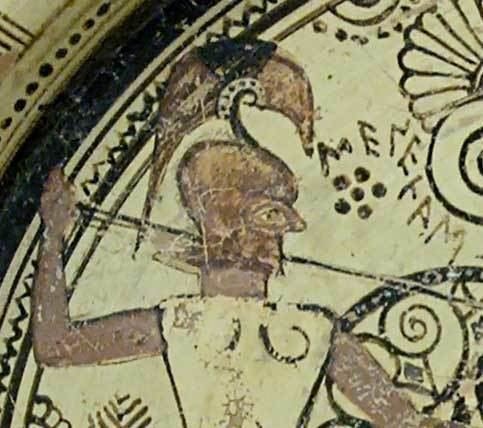
In Greek mythology, Euphorbus (Ancient Greek: or Euforbo) was a Trojan hero during the Trojan War.
Greek-mythology

Sostratus of Dyme was a Greek philosopher, who lived in the 4th century BC. He is best known for his work on the philosophy of the soul. He is believed to have been a student of Plato and possibly a teacher of Aristotle.
Sostratus is credited with being the first philosopher to introduce the idea of the soul being composed of three parts: the rational, the appetitive and the emotional. He argued that these three elements interacted in order to create a unified whole. He also suggested that the soul was capable of regulating itself, and that it could be trained to pursue virtue and wisdom. This idea was later adopted by Aristotle.
Sostratus of Dyme's work was highly influential in the development of later philosophical thought, particularly concerning the nature of the soul. His ideas are still studied and discussed today.
Greek-mythology
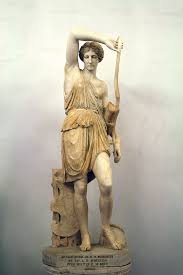
A surname of Apollo, under which he was worshiped, and had a temple at Pyrrhichus in Laconia. The name was derived either from the belief that the Amazons had penetrated into the Peloponnese as far as Pyrrhichus, or that they had founded the temple there. He was represented by a wooden image, dedicated by the women from Thermodon.
Greek-mythology
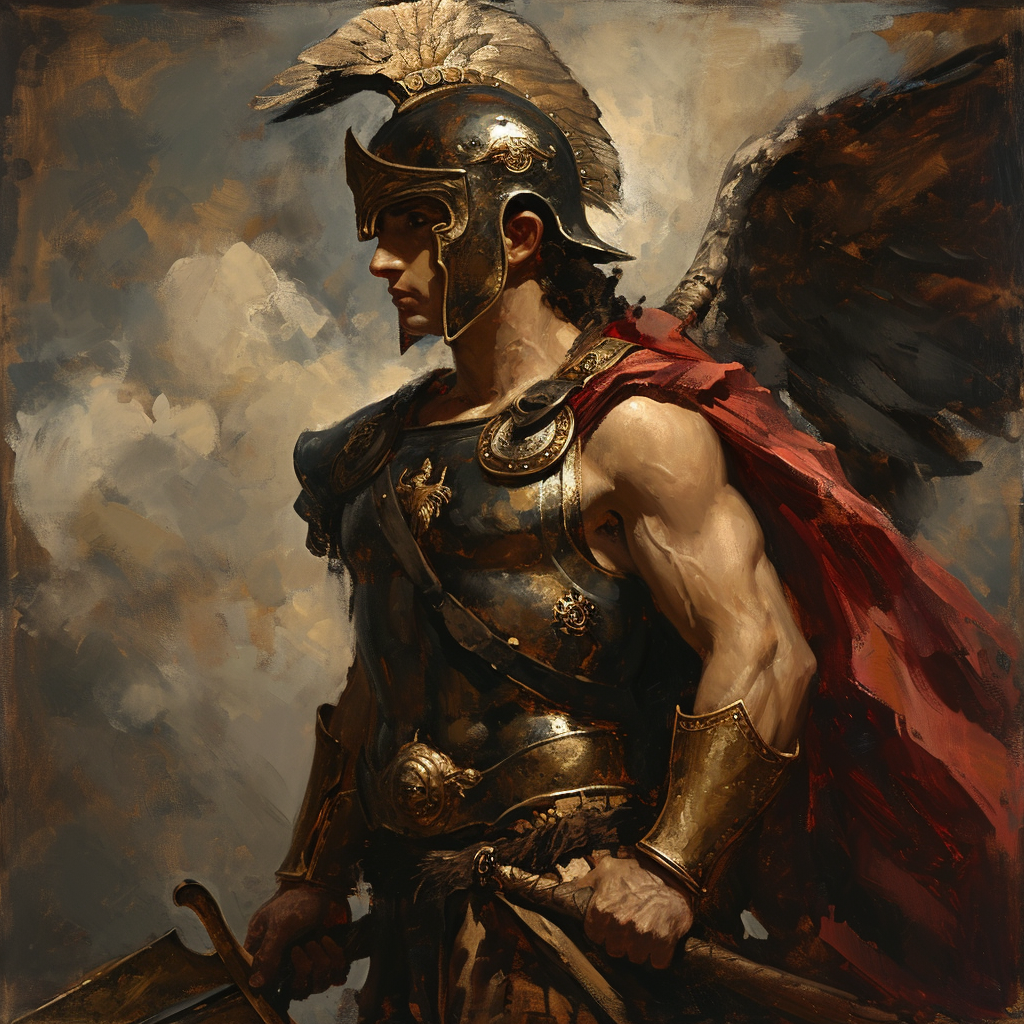
Perseus in Greek Mythology
Perseus is one of the most celebrated heroes in Greek mythology, renowned for his daring escapades and noble adventures. He is often regarded as one of the primary heroes in Greek lore, preceding other legendary figures like Heracles and Theseus.
Birth and Lineage
Perseus was born to Zeus, the king of the gods, and Danaë, the daughter of King Acrisius of Argos. His birth was extraordinary, conceived when Zeus visited Danaë in the form of golden rain. Fearing a prophecy that he would be killed by Danaë's son, King Acrisius cast Danaë and infant Perseus into the sea in a chest.
Major Myths and Adventures
The Slaying of Medusa
Perseus is best known for his quest to behead Medusa, one of the Gorgon sisters. Armed with gifts from the gods, including Hermes' winged sandals, Athena's reflective shield, Hephaestus' sword, and Hades' helm of invisibility, Perseus successfully slayed Medusa by using the shield to view her reflection and avoid her petrifying gaze.
Rescuing Andromeda
During his journey home, Perseus rescued Andromeda, who was to be sacrificed to a sea monster. He used Medusa's head to turn the monster into stone and later married Andromeda.
Fulfillment of the Prophecy
The prophecy that Perseus would cause King Acrisius' death came true unintentionally, when a discus thrown by Perseus struck Acrisius during athletic games.
Significance and Legacy
Perseus' adventures form a fundamental part of Greek mythology, capturing themes of bravery, virtue, and the extraordinary. His story has inspired a myriad of artistic and literary works and remains a potent symbol of the hero's journey in literature and popular culture. The annual Perseid meteor shower, named after Perseus, is believed to radiate from his constellation.
Greek-mythology
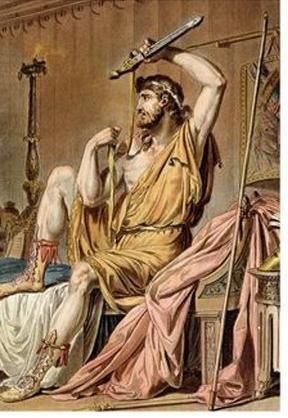
In Greek mythology, Agamemnon was a king of Mycenae, the son of King Atreus and Queen Aerope of Mycenae, the brother of Menelaus, the husband of Clytemnestra and the father of Iphigenia, Electra or Laodike, Orestes and Chrysothemis.
Greek-mythology

Lycurgus was the quasi-legendary lawgiver of Sparta who established the military-oriented reformation of Spartan society in accordance with the Oracle of Apollo at Delphi.
hindu-mythology
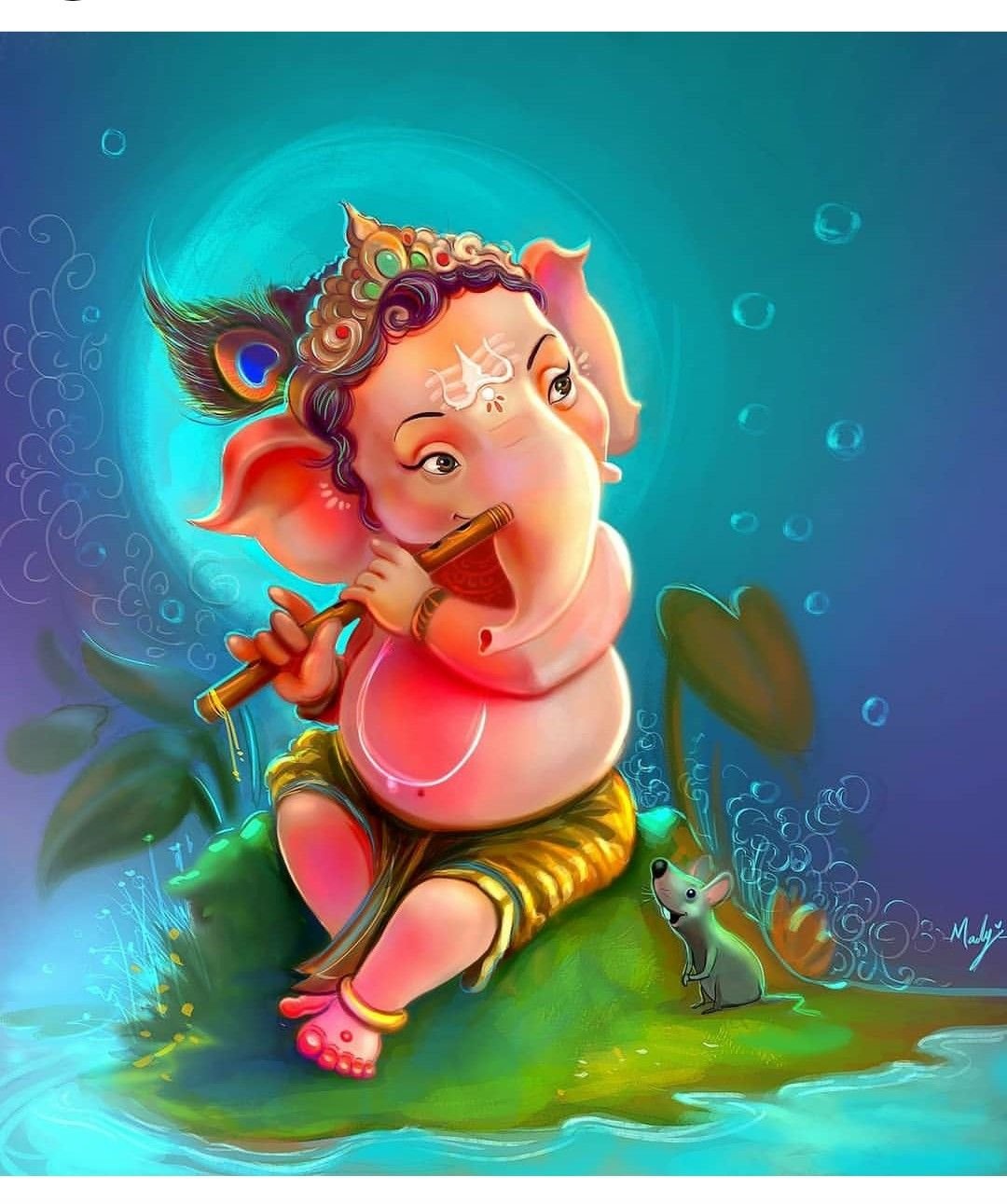
Ganapati, more commonly known as Ganesha, is a revered deity in the Hindu pantheon, known as the Lord of Beginnings, the Remover of Obstacles, and the deity of intellect and wisdom.
Iconography and Attributes:
- Elephant Head: Symbolizing wisdom, understanding, and a discriminating intellect.
- Large Belly: Represents the bounty of nature and Ganesha's role in protecting the world.
- Four Hands: In his hands, he holds a broken tusk, a modak (sweet), a lotus flower, and an axe or a noose, symbolizing sacrifice, the joys of life, purity, and attachment.
Birth and Significance:
Ganesha's creation is attributed to Parvati, the consort of Lord Shiva. After being beheaded by Shiva due to a misunderstanding, he was revived with an elephant's head and declared the leader of Shiva's ganas.
Worship and Festivals:
- Ganesha is worshipped as the remover of obstacles and invoked at the beginning of new ventures and journeys.
- The festival of Ganesh Chaturthi is celebrated with great fervor, culminating in the immersion of Ganesha idols in water.
Cultural Impact:
Ganesha's image is found throughout India and Nepal, in temples, homes, and in Jainism and Buddhism. He is also a prominent figure in various art forms.
Celtic-mythology

One of the most ancient and most widely worshiped of Celtic gods – who was venerated in Continental Europe, Britain and Ireland, Belenus (also known as Belenos, Bel, and Beli Mawr) was the quintessential sun god in the Celtic mythology. Known by his epithet ‘Fair Shining One’, Belenus was also associated with the horse and the wheel – and their composites tended to portray him as the effulgent Sun God gloriously riding across the sky in his horse-drawn chariot. Other representations depict Belenus as only riding his horse while throwing thunderbolts and using the wheel as his shield.
Norse-mythology

Gibica (also known as Gjúki, Giuki, or Gibicho) is a figure from Norse mythology, prominently featured in the Völsunga saga and in the Nibelungenlied, a Middle High German epic poem. In these sagas, he is portrayed as a king and the father of a significant family. In the Völsunga saga, a key source of Norse myth and legend, Gibica is known as Gjúki. He is the husband of Grimhild and the father of Gunnar (or Günther), Högni, Gudrun (Kriemhild in the Nibelungenlied), and Guttorm. His family, the Gjúkings, play a central role in the later parts of the saga, which intertwine with the legend of Sigurd (or Siegfried) – the dragon-slayer hero central to both Norse and Germanic legend. Gunnar, one of Gibica/Gjúki's sons, is a particularly important character. He is known for his involvement with Sigurd and Brynhildr, a valkyrie, which forms one of the central and tragic narratives of the Völsunga saga and the Nibelungenlied. In these tales, Sigurd marries Gudrun, and Gunnar seeks to marry Brynhildr. The story is complex and involves deception, broken promises, and eventual tragedy, leading to the deaths of several main characters, including Sigurd and Brynhildr. In the Nibelungenlied, Gibich is the name used for the character, and the story follows a similar but not identical course to the Norse sagas. The Nibelungenlied is more centered on the character of Kriemhild (Gudrun in the Norse sagas) and her quest for revenge against those who betrayed her husband Siegfried. The character of Gibica/Gjúki/Gibich is thus an integral part of the background and context for these rich and complex legendary cycles that were incredibly influential in both Norse and Germanic literature and culture.
persian-mythology
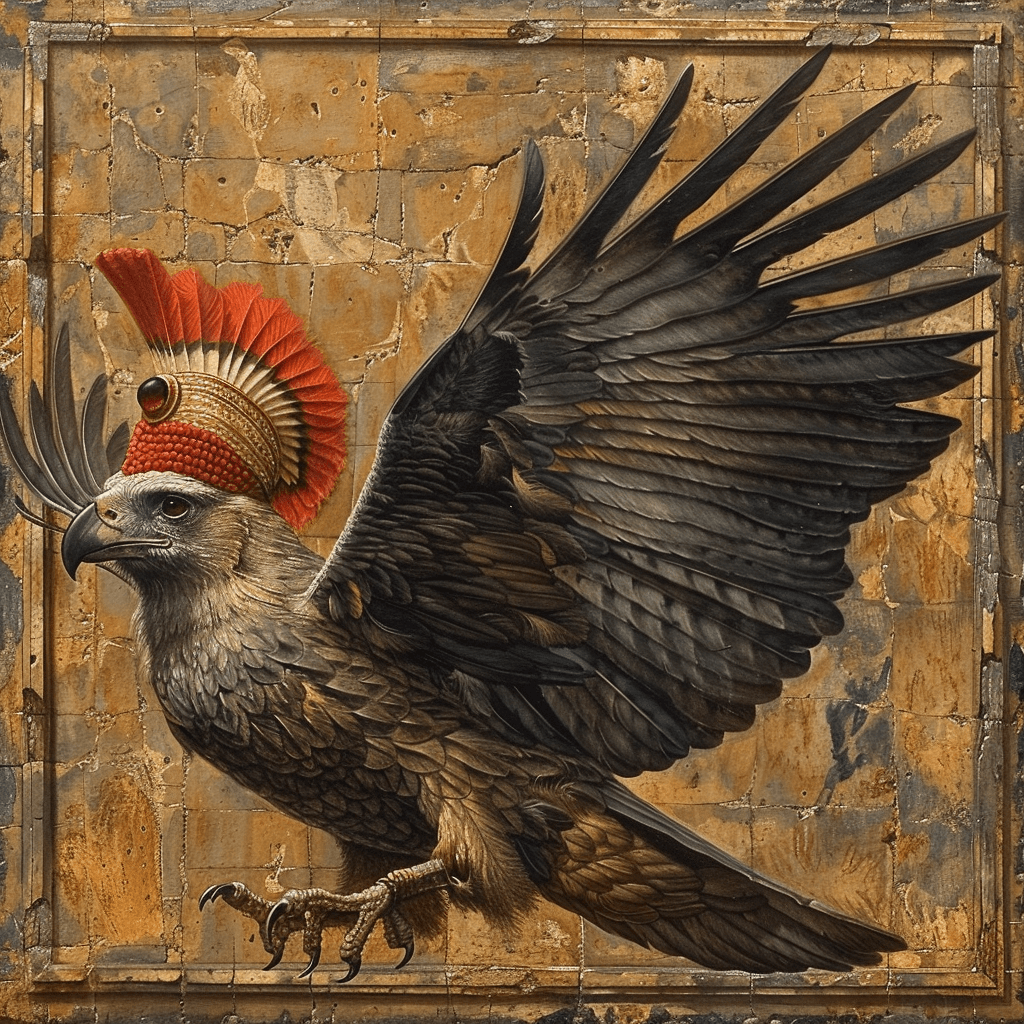
Mythical bird in Persian culture, symbolizing purity and fortune. Believed to bring good luck and prosperity.
hindu-mythology

Avatars are savior forms of a god that descend to earth to intervene whenever help is needed to restore dharma (moral order) and peace. The avatars of Lord Vishnu are:
- Satya Yuga: Kurma avatar, Matsya avatar, Varaha avatar, Narasimha avatar
- Treta Yuga: Rama avatar, Parashurama avatar, Vamana avatar
- Dvapara Yuga: Krishna avatar
- Kali Yuga: Buddha avatar, Kalki avatar(Yet to born)
Greek-mythology
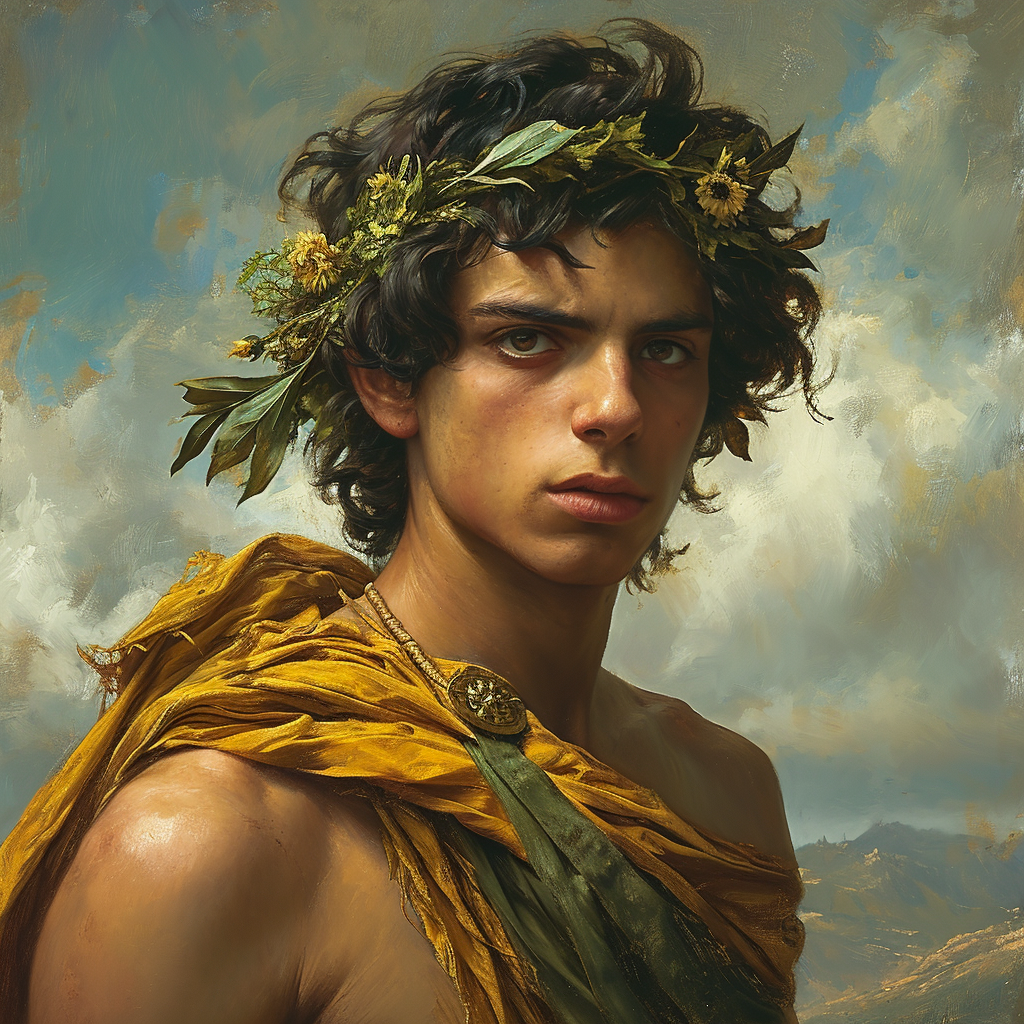
Alexanor was a son of Machaon, and grandson of the Greek god Asclepius, who built to his grandfather a temple on the summit of Titane in the territory of Sicyon. Around it there were dwellings for the use of those who came to solicit the aid of the god. Alexanor himself too was worshiped there, and sacrifices were offered to him, but only after sunset.
Movies inspired by Mythology
If adventure has a name... it must be Indiana Jones.

A prequel to Raiders of the Lost Ark (1981) set in 1935, the year before, the professor, archaeologist and adventurer by the name of Indiana Jones is back in action in his latest adventure. This time he teams up with a nightclub singer named Wilhelmina "Willie" Scott and a twelve-year-old Chinese boy named Short Round. They end up in a small distressed village in India, where the people believe that evil spirits have taken all their children away after a sacred precious stone was stolen. They also discover the great mysterious terror surrounding a booby-trapped temple known as the Temple of Doom. Thuggee is beginning to attempt to rise once more, believing that with the power of all five Sankara stones they can rule the world. It's all up to Indiana to put an end to the Thuggee campaign, rescue the lost children, win the girl and conquer the Temple of Doom. Written by Anthony Pereyra In 1935, Indiana Jones arrives in India, still part of the British Empire, and is asked to find a mystical stone. He then stumbles upon a secret cult committing enslavement and human...
The hunt for the ultimate power begins
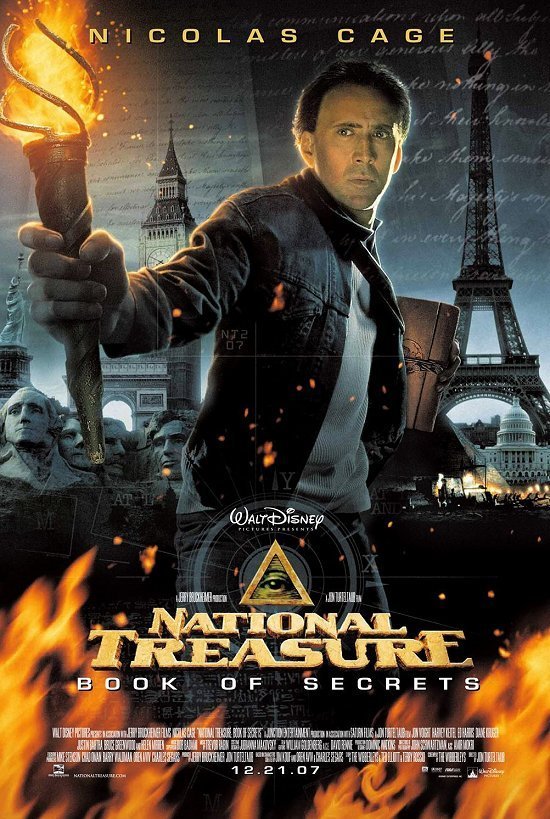
While Ben Gates is presenting new information about John Wilkes Booth and the 18 pages missing from Booth's diary, a man by the name of Mitch Wilkinson stands up and presents a missing page of John Wilkes Booth's diary. Thomas Gates, Ben's great-grandfather, is mentioned on the page. It shows that Ben's great-grandfather was a co-conspirator in Abraham Lincoln's murder. When doing more research, the conspiracy takes Ben, Abigail Chase, and Riley Poole to Buckingham Palace (which they break into). They discover a plank that has early Native American writing on it. The plank has only one symbol that Patrick Gates can identify. The symbol is Cibola (see-bowl-uh) meaning the City of Gold. In order to define the rest they have to go to Ben's mother, Patrick's divorced wife. After 32 years it brings back old arguments. After that the other clue is in the President's desk in the Oval Office in the White House (which Ben and Abigail sneak into) to discover that the clue lies in The President's Book. But in order to see the book, their choice is either get elected president or kidnap the President of the United States. Which do they choose? It's obvious. With Wilkinson close on their tail, they find the book in the Library of Congress. The conspiracy then crosses to Mount Rushmore where the clue was on the hills, but (according to the Book) President Calvin Coolidge had the faces carved in so no one can find the City of Gold. When they get there they find out that they must work with Wilkinson since he has some clues of his own. Who will claim Cibola? And will the name of Gates be known as murder? Written by mviedirctr354 Benjamin Gates must follow a clue left in John Wilkes Booth's diary to prove his ancestor's innocence in the assassination of Abraham Lincoln.
The power of Pandora's Box is in her hands

Off the coast of the volcanic island of Santorini, the intrepid archaeologist, Lara Croft, makes the unexpected discovery of a throbbing golden orb able to guide its holder to the mythical Pandora's Box. As the legendary artefact contains ancient mysteries of unfathomable power, Lara needs to make sure it doesn't fall into the wrong hands, especially the unscrupulous former Nobel Prize winner and now a bio-weapons dealer, Jonathan Reiss. With the aid of the former agent, Terry Sheridan, the fearless adventurer travels the world in pursuit of the precious item; however, can she retrieve it in time to save the day? Written by Nick Riganas Adventurer Lara Croft goes on a quest to save the mythical Pandora's Box, before an evil scientist finds it, and recruits a former Marine turned mercenary to assist her.
Two worlds. One hero.

The warrior Thor (Chris Hemsworth) is cast out of the fantastic realm of Asgard by his father Odin (Sir Anthony Hopkins) for his arrogance and sent to Earth to live amongst humans. Falling in love with scientist Jane Foster (Natalie Portman) teaches Thor much-needed lessons, and his new-found strength comes into play as a villain from his homeland sends dark forces toward Earth. The powerful but arrogant god Thor is cast out of Asgard to live amongst humans in Midgard (Earth), where he soon becomes one of their finest defenders.
All of Heaven is at war
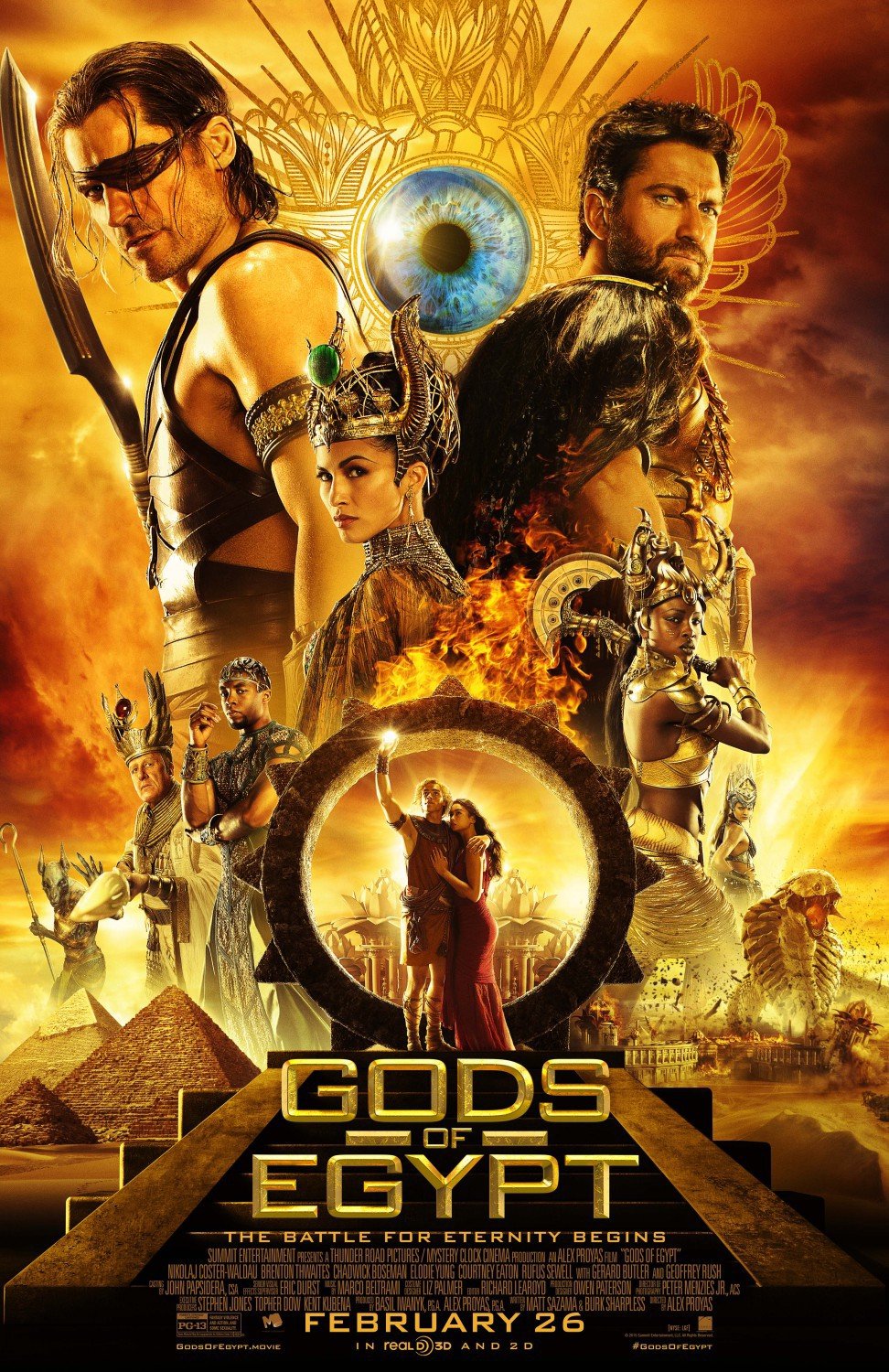
Set, the merciless god of darkness, has taken over the throne of Egypt and plunged the once peaceful and prosperous empire into chaos and conflict. Few dare to rebel against him. A young thief, whose love was taken captive by the god, seeks to dethrone and defeat Set with the aid of the powerful god Horus. Written by James Pasier Mortal hero Bek teams with the god Horus in an alliance against Set, the merciless god of darkness, who has usurped Egypt's throne, plunging the once peaceful and prosperous empire into...
